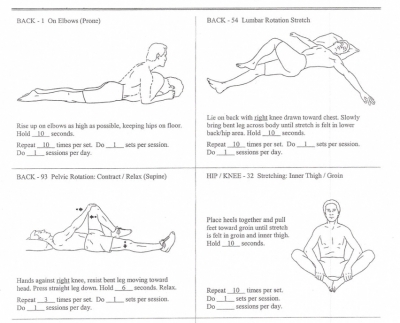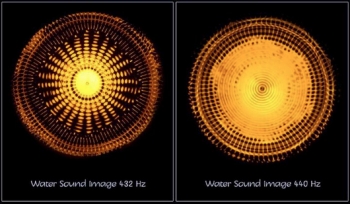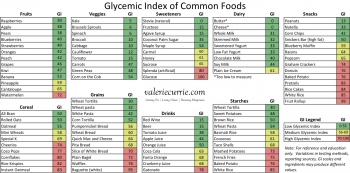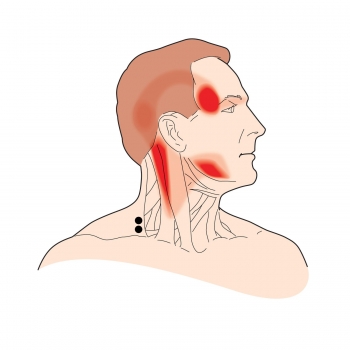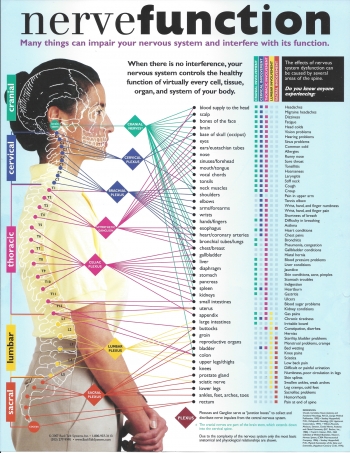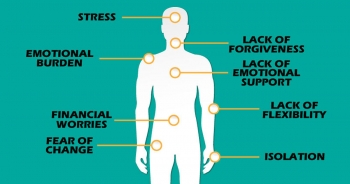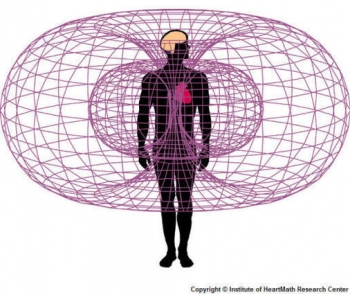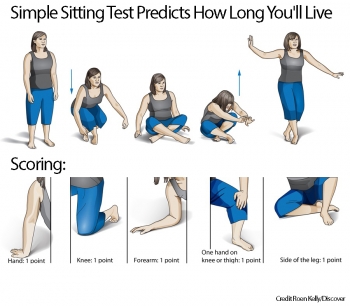Inside your body, the effects of compensation may be less obvious to you. Your internal structures (your bones, muscles, organs, connective tissue, and nerves) may now be moving and functioning in ways they were never designed to do, but without causing any obvious problems – yet.
With each trauma your body adapts…and adapts some more….layering compensation on top of compensation, until it runs out of options.
That’s when some version of the “single event” that brings many people into our clinic happens. You reach into the trunk of your car, for example, to lift a bag and your back “gives out.” But it isn’t the one stretch that’s done you in, it’s the accumulation of compensations. This final event is just your body saying, “Enough!”
What affects your fascia, affects everything.
To understand what’s really going on in your body, you need to understand how your fascia works. It’s your body’s key compensating mechanism.
Fascia is the connective tissue that runs throughout your body. It’s a dense, elastic web that supports, connects and separates your bones, organs, muscles, nerves and blood vessels. It connects every single part of you with every other part of you. So it’s not surprising that it plays an integral role in your healing process.
Your fascia might, for example, thicken and strengthen in one direction to increase support for an injured body part, while lengthening in another direction to accommodate a new position.
But as it stretches or tightens, it affects all of the interconnected structures in its web. It can create lines of tension, put pressure on blood vessels and nerves, and force muscles to work in new ways. This is how trauma to one part of your body can result in pain or chronic irritation elsewhere.
The fascia also acts as a shock absorber. When you fall, get hit in a game, or thrown about in a car accident, it distributes the force of the impact throughout your body to protect your organs – and not always in a predictable manner.
While this is a good thing, it also means that an impact injury to one part of your body can cause a “ripple effect” throughout your fascia and the internal structures it connects, as the force is dispersed. The original injury may show up later as pain in another part of your body.
Trauma can “ripple” through your body.
 https://www.jerichophysio.com/wp-content/uploads/2016/05/myofascial-release-91x155.jpg 91w, https://www.jerichophysio.com/wp-content/uploads/2016/05/myofascial-release-100x170.jpg 100w" data-lazy-sizes="(max-width: 175px) 100vw, 175px" srcset="https://www.jerichophysio.com/wp-content/uploads/2016/05/myofascial-release.jpg 175w, /https://www.jerichophysio.com/wp-content/uploads/2016/05/myofascial-release-91x155.jpg 91w, https://www.jerichophysio.com/wp-content/uploads/2016/05/myofascial-release-100x170.jpg 100w" sizes="(max-width: 175px) 100vw, 175px" style="box-sizing: border-box; outline: none 0px !important; max-width: 100%; height: auto; vertical-align: middle; border: 0px; float: right; margin: 0.35em 0px 0.35em 2.15em;">It may be helpful to use the image of a spider’s web to visualize how your fascia transmits the effects of trauma throughout your body.
https://www.jerichophysio.com/wp-content/uploads/2016/05/myofascial-release-91x155.jpg 91w, https://www.jerichophysio.com/wp-content/uploads/2016/05/myofascial-release-100x170.jpg 100w" data-lazy-sizes="(max-width: 175px) 100vw, 175px" srcset="https://www.jerichophysio.com/wp-content/uploads/2016/05/myofascial-release.jpg 175w, /https://www.jerichophysio.com/wp-content/uploads/2016/05/myofascial-release-91x155.jpg 91w, https://www.jerichophysio.com/wp-content/uploads/2016/05/myofascial-release-100x170.jpg 100w" sizes="(max-width: 175px) 100vw, 175px" style="box-sizing: border-box; outline: none 0px !important; max-width: 100%; height: auto; vertical-align: middle; border: 0px; float: right; margin: 0.35em 0px 0.35em 2.15em;">It may be helpful to use the image of a spider’s web to visualize how your fascia transmits the effects of trauma throughout your body.
We all know that when we pull on one side of a spider’s web, it distorts the shape of the other side. In fact, it changes the shape of the web all along the lines of tension that we create with our tug.
The same thing happens in the fascia, an injury happens, or a restriction develops in one area and the effect ripples along lines of tension to other body parts.
This explains why a hard backwards fall onto your pelvis, for example, might initially cause pain in your lower back, but show up later as an upper back or neck problem. Or, why an impact injury to the area around your liver, might cause shoulder pain later on.
When one part of your body is weak or compromised, your entire structure responds to balance out the problem – just like a suspension bridge. Understanding this is key to finding the cause of a problem and not just treating its symptoms.Bev Kosuljandic, Partner, Jericho Physio
Tensegrity: the principle behind our success.
Tensegrity, a combination of the words “tension” and “integrity”, is a structural principle in architecture that offers the most elegant model for illustrating how your fascia and internal structures work together.
In fact, Jericho’s logo is based on a tensegrity model: a geometric shape made up of segments that are held together by continuous tension.
How does your body compare to a tensegrity model? The bones in your body float in a sea of soft tissue – they are held in position by tension from your muscles and fascia. The shape of your body isn’t maintained by rigid joints and compression like a house, but by this balance of tension across your entire structure.
If you were to play with a tensegrity model, you’d see instantly how your fascia and other internal structures respond when you get injured.
Press down on (injure) one of these models – disconnected rods (bones) held together in a three-dimensional shape (your body) with elastic cords (muscle and fascia) – and you see that the model distorts all over.
It doesn’t crack at the point of highest compression like a house would. Instead, the force disperses over the model and it concentrates, or breaks, at its weakest point.
Stretch the model and everything stretches. Where will it break? Again, at its weakest point where, to bring us back to the human body, you’re feeling pain or experiencing dysfunction.
To see this principle in action, take a look at this video from Thomas Myers, author of “Anatomy Trains”
How does this principle help us solve problems in your body?
In a nutshell, it means that when we look for the source of your problem using the principles of tensegrity, we look along lines of tension in your body. Because the place you feel the pain, isn’t necessarily its source. The source of your pain may be the place where your body was first “squashed” or “stretched”, or it may be at a weak point that appears unrelated.
That’s why, at Jericho, we take a “whole body” approach to your treatment. And it’s why we have such a high success rate treating chronic pain and complex conditions.
Because we’re not just looking at the place where your symptoms appear, like the sore shoulder we mentioned earlier, we’re looking along lines of tension in your body for their source, which might be restricted fascia around your liver – so that we can solve your problem once and for all.
Your body carries your history – all the stresses, accidents and illnesses leave their mark and your body adjusts to deal with them. Sometimes the source of today’s pain is something that appears unrelated – that happened in the past. What we’ve learned after years of experience, is that if one area is damaged, it affects the balance and symmetry in other areas. Tensegrity is a useful model for understanding how damage in one area can cause pain in other regions, even though they appear unrelated.Robert Fong, Partner, Jericho Physio
Source:
https://www.jerichophysio.com/tensegrity-and-your-fascia-a-whole-body-approach-to-treatment/

